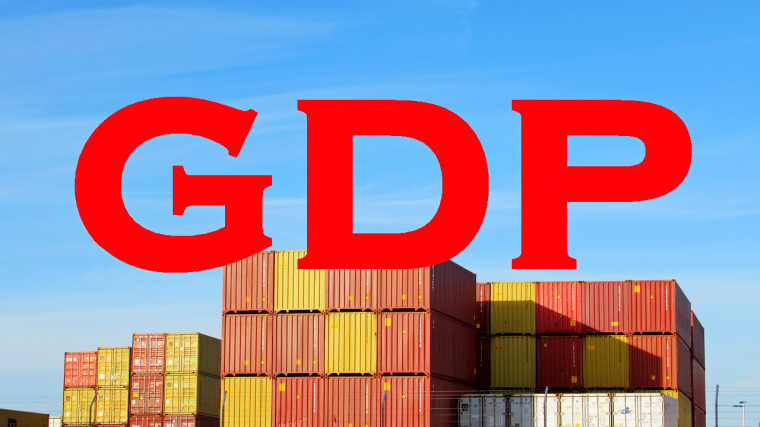
Economists at the country's largest bank have slashed their forecast for GDP growth in the current quarter and still maintain that the Reserve Bank (RBNZ) will need to drop the Official Cash Rate (OCR) as low as 2.5%.
At the moment the OCR is at 3.25%, having been dropped from 5.5% since August last year. Financial market pricing is suggesting at the moment that the OCR might not go much lower than 3.0%, if indeed it does go lower than that at all.
ANZ senior economists Matt Galt and Miles Workman say in a Forecast Update that they have downgraded the bank's forecast for June quarter growth from a rise of 0.4% to 0.1%.
This follows the news last week that March quarter GDP had grown by 0.8% - higher than recently upgraded forecasts from the main bank economists and much higher than the just 0.4% forecast by the RBNZ.
However, more recent 'high frequency' data for the June quarter that we are in has suggested that activity could have subsequently stalled considerably.
It is worth noting that the RBNZ's current forecast for the June quarter is for 0.2% growth, so, it has already been expecting some slowdown during the quarter.
ANZ's Galt and Workman said their new forecast incorporated "some payback" from the first quarter GDP result and "centralising some of the weaker signal we’re seeing in the high-frequency data for the [second] quarter".
"Our updated GDP outlook doesn’t significantly change our view on the OCR," the economists said.
"Further cuts could be delivered a little later than our forecast given stronger Q1 GDP growth than the RBNZ was forecasting, potentially higher Q2 non-tradable inflation, and the RBNZ’s data-dependent approach.
"However, we still believe a degree of outright monetary stimulus (i.e. an OCR under neutral) will be needed to stabilise underlying inflation near target over the medium term. We continue to pencil in a cycle low for the OCR of 2.5%."
The economists say that beyond the current quarter, their GDP forecast is little changed.
"...A fragile recovery is underway, but it’s relatively gradual and from a weak base. That means the economy is expected to be operating with a considerable degree of disinflationary spare capacity for a while yet."
So, they say economic recovery is expected to continue in 2025, "albeit with a slight delay versus our previous forecast".
"With the support of easier monetary conditions, underlying momentum is expected to gather pace in 2026. We expect annual average growth to come in at 0.9% over 2025, rising to 2.4% in 2026, and 2.7% in 2027 as the economy returns to trend."
They say while their GDP forecast suggests "we’re now past the worst of it", for many households "it won’t feel like things are getting better until after the labour market turns the corner and inflation-adjusted wage growth has been sitting in positive territory for a while".
"Indeed, for many households the cost of living is still a huge problem, and that’s a 'price level' problem that will only be resolved via real income growth, given the RBNZ’s mandate is to lower the rate of change in consumer prices to 2% (not see the level of prices fall)," the economists say.
"In other words, consumer prices are not going to go down to where consumers think they 'should' be, but as the economy continues to recover, prices relative to incomes should hopefully fall."
10 Comments
So NZ Inc. is undoubtadly in the unenviable position of upcoming Stagflation, a term that's been banded around OECD economies for a while now without it actually popping up. However we are going to be the very definition of it in coming quarters. So the question arises how will the RBNZ react to it: do they "look through" a few quarters of higher prices and keep easing like most economists are forecasting, or do they stick to their SINGLE mandate of keeping inflation within the band. I would have suspected Adrian would have kept to the mandate as the sole objective but we currently have a stand in Gov'nur and the search is on for a new one, so frankly it's probably going to be a highly political recruitment, and I'd be bias toward a more dovish stanced hire. Ironically the current government were the ones who abolished the dual mandate.
When in history have lower interest rates kick-started an economy without a decent hit of fiscal in support? When will we ever learn?
2021 (acknowledge you might consider Labours incompetent control of govt spending "fiscal support")
Balancing the books at all costs is the theme for the current government.
If rates continue to drop the rich will use their income and asset bases to leverage the rest of NZ into further surfdom. Options... protect the current asset ponzi above all else, or, allow the orderly asset price retreat to continue and allow the next generation of kiwis a chance to control their own shelter.
Also interpreted as stop exporting our future youth tax payers westward.
A bit late to the party ANZ. Better late than never though.
The same for longer. Longer, this one and another two OCR reviews.
ANZ smiles with egg on their face after years of failed predictions broadcast to try and influence the market, and maintain hopium amongst the plebs.
ANZ are correct.

We welcome your comments below. If you are not already registered, please register to comment.
Remember we welcome robust, respectful and insightful debate. We don't welcome abusive or defamatory comments and will de-register those repeatedly making such comments. Our current comment policy is here.